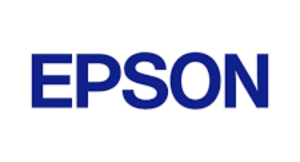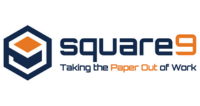Digital printing involves transferring a digital image onto a surface. It can be done with various tools, from a simple office copier or printer to complex rotogravure printing machines like you see printing magazines.
Digital printing (or digital presses) works by sending ink droplets from a printing machine to a chosen surface in a pattern that matches a predetermined image.
Files containing different images go directly to the printing machine, which transfers them to a surface that can vary from paper and cardboard to fabric and plastic.
Even though digital transformation reduces the need for paperwork, digital printing is still an integral part of everyday life.
Speaking of digital transformation, we want to make sure you know exactly what your business needs as our tech world continues evolving. We’re explaining office technology and what digital printing can do for your business.
What Are the Benefits Of Digital Printing?
Digital printing comes with a variety of benefits. Here are some of the most notable ones:
- Quality: Even though other printing types, like offset and screen, can produce good quality, digital printing offers impressive results. Unlike some other methods, the quality of a first product is the same as the last.
- Speed: The digital printing process involves a direct transfer of the ink to the substrate—that’s why it’s much quicker than other printing options. Unless an extremely large volume is required, digital printing is the fastest process.
- Cost: Digital printing is highly cost-effective. Besides a printing machine and ink or toner, other equipment isn’t required. The fee may vary depending on the ink quality, machine complexity, and type of substrate. However, compared to other methods, digital printing is usually less expensive.
- Flexibility: When it comes to customising a print project’s final product, digital printing is fast and flexible. All you need to do is adjust the digital file, and the machine prints the desired text or image. That’s why digital printing is a preferred method for volatile printing tasks.
- Simplicity: Digital printing involves pressing a few buttons and getting a result within seconds. It doesn’t require any special skills or knowledge to get the job done—the process is fully automated.
- Sustainability: Digital inkjet printing cuts the amount of waste because it only sends ink to the parts to be printed. Unlike offset printing, no equipment cleanup is necessary.
- Choice of Materials: Since digital printing doesn’t involve direct contact with the surface, it’s possible to choose various printed materials, from plastic to delicate fabrics.
- On-demand: You can store your images on the hard drive or the cloud and then print them when necessary. With other printing methods, it’s easier and cheaper to print items in bulk, thus taking up storage space.
- High Potential: The numerous advantages of digital printing make it a subject of continuous research and development, thus improving user experience and maximising capabilities.
Overall, digital printing is cheaper, easier, and more flexible than other printing methods. That’s why it gained worldwide popularity, replacing older and more complex options.
Digital Printing vs. Offset Printing: What’s the Difference?
While digital printing is highly advantageous, other methods are still in use. One of them is offset printing. Offset printing (or offset presses) is a traditional printing method. It uses printing plates, rubber blankets, and ink. Aluminium plates transfer an image onto a rubber blanket, which in turn rolls over a sheet of paper, leaving a print.
Offset printing is generally used when large quantities are needed. Once set up, the process is fast and accurate.
Advantages Of Offset Printing:
- Better image quality (However, today’s top-notch digital printing equipment can match the quality).
- Better colour accuracy and balance
- Cost-efficiency for high-volume commercial jobs
- Additional colours can be added through ink, such as metallics like silver and gold.
Disadvantages Of Offset Printing:
- High costs for low and medium-volume tasks
- A long set up process
- Lack of flexibility (if there is a typo or error, the entire batch is ruined)
In some cases, offset printing can be a better choice for high-volume printing jobs without tight deadlines. However, the type of printing depends on the specific needs of your employees and customers.
Digital Printing vs. Screen Printing: Which one is Better?
Screen printing involves using a stencil (or “screen”) to apply layers of ink to a surface, one at a time. Screens are usually made of porous materials such as mesh.
Stencils with an image are placed over the substrate, and then a printer applies ink across the screen to push the image through the screen onto the surface.
Each colour requires a separate screen. Screen printing doesn’t apply pressure to the material. That’s why it’s often used for printing on delicate substrates like balloons or thin fabrics.
Advantages Of Screen Printing:
- A more vibrant, saturated, and bright finish
- Better colour matching capabilities
- Cost-efficient for large batches
Disadvantages Of Screen Printing:
- Complicated and time-consuming setup
- High costs for low-volume printing
- Only one design per batch
- Resolution of images is typically lower quality.
What are the Different Types of Digital Printing?
The most common types of digital printing are:
- Inkjet: Inkjet printers copy an image from a digital file and reproduce it on a given material. The printer sprays numerous tiny ink droplets on the surface to create the desired image. Today, commercial inkjet printer technology is replacing traditional high-speed printing presses.
- Laser: Laser printers employ a laser to transfer the digital image to the surface. The laser moves back and forth to create static electricity during the printing process, releasing the heated toner onto the surface.
Inkjet printers are typically a better choice for photos and colour documents. Laser printers are faster but sometimes come with higher upfront expenses. However, laser printers tend to have a higher long-term ROI than inkjet printers.
Your Next Steps: Digital Printing Is the Future
Digital printing is evolving quickly. Thanks to its speed, cost-efficiency, and quality, it’s likely to render older printing technologies useless in the near future.
By taking full advantage of digital printing capabilities, you can create high-quality products and marketing materials while upholding the reputation of a high-tech company.
At SOS Group, we are an office technology solutions provider—always ready to help you achieve your top business goals. To learn more about digital printing, choosing office equipment, or outsourcing important printing tasks, reach out to one of our business technology consultants today. We’re here to give you peace of mind to help you win more business.














